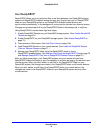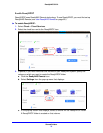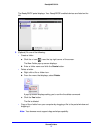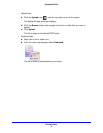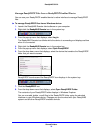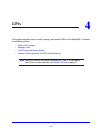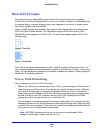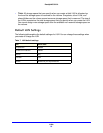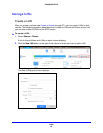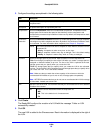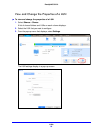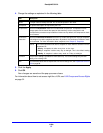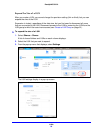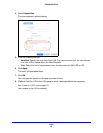
LUNs
82
ReadyNAS OS 6.0
Basic LUN Concepts
The volumes on your ReadyNAS can be divided into shares and logical unit numbers
(LUNs), both of which are logical entities on one or more disks. Shares and LUNs enable you
to organize data in a volume by type, group, user, department, and so on. A single volume
can contain multiple shares and LUNs.
LUNs are SAN (storage area network) data sets that allow data transfer and storage over
iSCSI
and Fibre Channel devices. The ReadyNAS supports iSCSI devices only. Each
ReadyNAS system supports up to 256 LUNs. The local admin page displays LUNs in the
following way:
Figure 6. Thin LUN
Figure 7. Thick LUN
Each LUN is configured independently of other LUNs that reside on the same volume. You
can configure settings such as compression, protection, provisioning, LUN size, and access
rights. You can also specify whether and how often a snapshot is created. These settings are
explained in the following sections.
Thin vs. Thick Provisioning
You can specify the size of a LUN in two ways:
• Th
in. A thin LUN lets you overallocate its size. That is, you can assign a LUN size that is
larger than the size of the volume. Even though you specify the size of a thin LUN when
you create it, storage space is assigned on demand instead of up front. This method
greatly improves the utilization rate of the LUN because storage space is assigned only
as data is written to the LUN. However, the size of the LUN is reported as the total
storage space that you specify when you create the LUN.
You can expand a volume as needed (if necessary, adding disks in the process) without
e
xpanding the size of the LUN and therefore, without disconnecting users. Make sure that
you watch the volume capacity of the volume on which the overallocated LUN resides so
you do not run out of storage space unexpectedly.
Note: NETGEAR recommends that you do not use an overallocated LUN for
storag
e of critical data. Instead, use a thick LUN.



